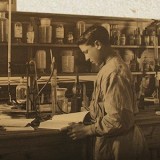All the Walkscapes
-
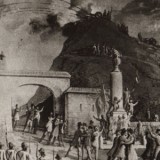
From a cannon shot distance
View detailThere is an area of the city of Pesaro where, "from a cannon shot distance", which in this case means in the space crossed by a cannonball, it is possible to collect traces that tell how Pesaro has changed after the second half of the '800. The area of the city that stretches from Rocca Costanza to Monte Ardizio turns its back on the historic center and has no buildings and churches of great artistic value, but shows the development of modernity, as it was then conceived. Pesaro changed profoundly when it decided to tear down the ancient walls and destroy the gates, thinking of an urban, demographic and economic development that still continues to grow even today in that direction. Pesaro stopped being the small city closed between the walls and the sea and conquered the countryside.
From the riots of the Risorgimento to the construction of the houses of the first industrial bourgeoisie, from the monuments of the "fascio" to the wells of the Roman aqueduct, Roberto Vecchiarelli has identified curiosities and important traces, collected documents, photos and drawings that tell a path that can be enclosed in "a un tiro di schioppo”- an expression that in the local jargon serves to indicate a not too wide distance, the one covered by a bullet fired from a small rifle “schioppo”- but a walk full of stories that reconnect places that today seem fragmented.
We recommend following the steps on almaloci.com because in this walkscape the documents published are numerous, interesting and curious.
Concept: Roberto Vecchiarelli
Walkscape: Antonella Micaletti
Coordination / Digital: Settimio Perlini
You can follow the walkscape with the Podcast version - in italian from this link.
-
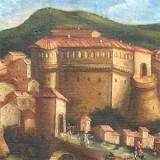
-
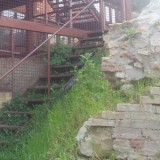
-
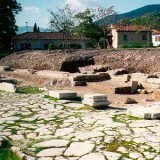
-
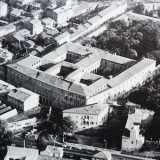
-
 View detail
View detailA path that follows the traces left by the Perticari family which marked a great transformation of the city of Pesaro.
-
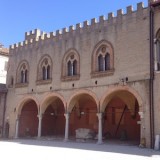
-
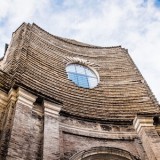
The In(di)visible town. Invisible Pesaro
View detailAround the town you can find still important signs of change - sometimes they are imperceptible traces not only in art and history, but also in everyday life. For this reason the territory is like a palimpsest.
These tracks are only apparently unconnected and they build up fragments of an history that spans the ages and the facts, that ties the story to other disciplines (botany, science, literature, architecture) allowing the observation and the imagination to track the thread that combines them.
Walk, look, pick up are some of the actions you can start to reread the territory, to find references and connections.
THIS WALKSCAPE IS NOT AVAILABLE IN ENGLISH LANGUAGE - PLEASE CHECK THE ITALIAN VERSION.
-
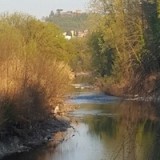
-
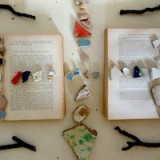
-

The Major Way, seven alleys and three squares
View detailThe major way, seven alleys and three squares
This podcast accompanies you to discover Fermignano when it was only a castle, before its modern conformation.
Fermignano is a small town of roman origins. The count Guido Antonio Montefeltro, initiator of the Urbinate lordship, made “the castle” of Fermignano build next to the bridge over the Metauro river, at the end of the 14th century.
Around the 15th century, the castle – together with the major way, seven alleys and three squares – took shape.
The town was equipped with walls on which two doors opened: one next to the bridge over the Metauro river and next to the tower called “porta Romana” which was demolished in 1870, the other one beside the church of San Pietro and on the top of the major way that leaving the castle, leads to Urbino and that was demolished at the end of the 19th century.
The bond with Urbino was very profound because the town of Fermignano, has always been connected to Urbino from its origins and only in 1818 the first town Council of Fermignano was established. In the same year the council of the castle of Fermignano and of the surroundings villas, met on the top floor of the tower and started a new phase for the small town.
The town developed around the Metauro river which almost surrounds it and that has set the pace of many important transformations of its social and economic life.
The walkscape goes through the major way, the seven alleys and the three squares that have created Fermignano, telling about the transformations that occurred during the passing of time and that are already visible nowadays. So the places of the walkscapes are even more outside the castle; the first stages of the walking are the last ones in order of appearance in the story of the town, but as we usually do in the walkscapes, we read the current structure to know and interpret the past.
Walkscape Promoted by Assessorato alla Cultura - Comune di Fermignano
Curated by Etra.entra nella arte
Project: Antonella micaletti
Walkscape: Emanuela Ivaldi
Digital: Settimio Perlini
Historical Sources: Giulio Finocchi / Biblioteca Oliveriana
Durata: 2 ore
-
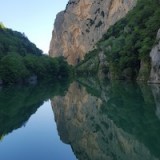
Outside the castle of Fermignano
View detailThe oldest settlements and the evolution of the territory of Fermignano outside and around the castle. The path shall be followed by car.
Historical sources: Giulio Finocchi, Biblioteca Oliveriana
Walkscape: Manuela Ivaldi
-
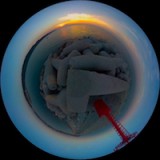
-

-
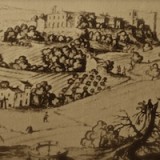
-
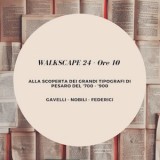
-
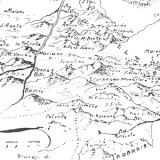
-
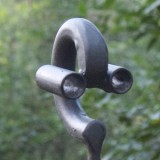
-
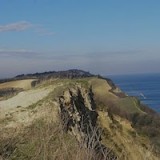
-
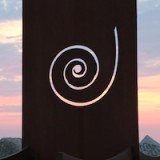
-

-
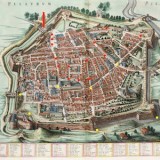
-
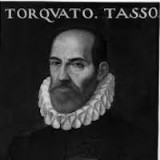
Torquato Tasso in Fermignano. Nature and art, escape and shelter of an errant knight
View detailConcept: Roberto Vecchiarelli, Antonella Micaletti
Conduction: Manuela Ivaldi
Digital: Settimio Perlini
Voice: Elisabetta Marsigli
Fondi documentari Biblioteca e Musei Oliveriani
Pictures: Archivio contessa Eugenia Carotti Rigi Luperti, Sandro Pesaresi, Settimio Perlini
Bibliography:
Rafaella Michelangelo, I Bonaventura. Una famiglia del patriziato urbinate, Grafiche Stibu, Urbania 1999
AA,VV, a cura di Mario Luni, Castrum fimignani, Castello del ducato di Urbino, Banca Popolare 1993
-
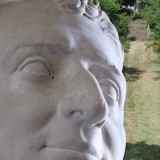
-
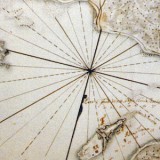
-

-
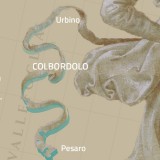 View detail
View detailThere are different ways of looking at a territory, and certainly the imagination is essential for everyone; also for the geographer, the naturalist, the historian, the surveyor, the poet, the anthropologist or the artist.
The Park of the Muses and Nymphs is a project of reading the territory, a filter through which to look at the landscape, trying to combine different looks by binding them tightly with the thread of imagination and poetry. Not only with the imagination, but starting from the traces left by the many characters and the many events of the lands of Vallefòglia, which create continuous references between one place and another.
Due to the transformation of the territory, today we are unable to read the ancient harmony, but it is traceable in numerous themes that allow new paths every time, even through the same places.
The center of gravity of the Park shifts attention from the two main centers of Pesaro and Urbino to the Vallefoglia area and expands towards the two ends of the province ...
The dominant theme that makes it possible to resonate the entire valley of its ancient unity is that of the Muses and Nymphs. We find them in Pesaro, in Sant’Angelo in Lizzóla, in Urbino. They are muhse or nymphs depending on the cultural context. But looking at Vallefòglia with their eyes it is possible to tell of lands where the activities of human wisdom, art, poetry and nature have found a balance still perceptible today, even in places devastated by war or transformed by progress.
We therefore trace them in art and poetry but equally in nature: landscape and water have therefore been identified as additional themes in which the Nymphs and Muses live and manifest themselves, allowing a comparison with those who have observed the landscape and "Portrait" in the past: Mingucci and Liverani.
They are dominant themes throughout the territory but they also to leave room for many others.
Like the ribbon of the muse Clio, the "Muse of History" of Giovanni Santi, we follow the movement of the Foglia river and the traces of the water (in which the Nymphs live), to understand how the history of the Foglia valley changes its course and its landscape, but drag immortal cultural references with it.
In the pictures of the starting page of the walkscape, on the right you will find the Muse Clio, the muse of history, painted by Giovanni Santi between the year one thousand four hundred eighty-five and ninety, stands in front of a rock; it is related to nature.
In the version later placed in the Tempietto delle Muse in the Ducal Palace of Urbino (and today at Palazzo Corsini in Florence) it has lost the fluttering ribbon, present instead in the design version. Still in the images on the starting page of the walkscape on the left you will find the pen version which is now in London, in the Royal Collection.
We imagined that the movement of the Musa ribbon was like that of the river that crosses the Foglia valley and combines culture and nature, history and legends ..
How to visit the park
The park is built through numbered and georeferenced stages, even if it is not necessary to follow the proposed order, so that no one gets lost. In reality, the best way to get to know a territory is to get lost.
To find the right mediation we propose you to follow itineraries following your interests, your intuition, your curiosity. You can find them on the home page on almalòci.com
But it is more interesting that these and other routes are redesigned by each traveler within the Park of the Muses and Nymphs, discovering new references and references with our texts and commented images everywhere.
-

-

-
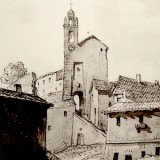
-
 View detail
View detailPesaro is a city worth visiting: for its buildings, its collections, the landscape that surrounds it. This is not just a message of current tourism promotion, but a certainty for those who intended to come to Pesaro, both as a chosen destination and as a place to cross during a longer trip.
It happened to Sir Thomas Graham Jackson, an English architect born in Hampstead: in 1888 he stopped in Pesaro, and in the typical notebook of travelers of the time, he wrote down impressions, meetings, places.
What was Pesaro like in Sir Jackson's time and what impression is given of the city?
-
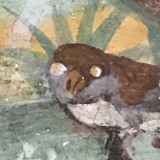
-
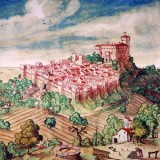
-

From Raffaello to Genga - Bike Tour
View detailThe Raffaello to Genga tour, starts from the Renaissance city of Urbino, going through the Cesane woods and crosses the countryside of Montefeltro, includes stops and visits along the way.
The whole tour fits perfectly to the celebrations of the 500 years of Raffaello Sanzio. In fact the two painters (Raffaello and Genga) are linked not only from an artistic point of view but also from their own families: the grandparents of Genga (Piero di Andrea da Genga) and Raphael (Sante di Peruzzolo da Colbordolo), came from these places . Both the grandparents of the Painters together with the populations of these hills for various vicissitudes found refuge in nearby cities. Furthermore Giovanni Santi (father of Raphael) was originally from Colbordolo, while the Genga family owned a estate in these lands and Genga himself came here to spend the last years of his life.
The Tour will therefore also be a way to recall the stories of the people of the Valle del Foglia, who over the years have had to move from the countryside and the Castles to survive landslides, hydrogeological instability, battles, changed economic conditions also due to the Papal domination of the our region before the unification of Italy. It will be a unique opportunity to rediscover the close historical, artistic and gastronomic links between Urbino
Ducale and the Valle del Foglia, going through wonderful and well preserved villages and castles.
-
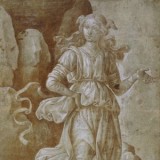
-

-
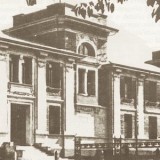
-

Furlo Est!
View detailThe Furlo means “a lot of possible experiences together”: history, nature, legends and art, they intersect each other while walking, while observing, listening and living.
We are working on it!
-
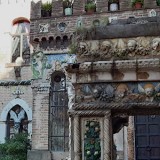 View detail
View detailPesaro: ceramics in the city.
Pesaro boasts a very ancient tradition of ceramic manufacturing which has not died out at all. Even today there are many enthusiasts, experts and curious people. Friends of ceramics exist and ceramic objects are in every home, they are often a precious and welcome gift, they are a symbol of the city.
Two important collections constitute the rich testimony of the evolution of techniques and styles: the one in the Civic Museums where ancient ceramics are preserved and the one in the Mengaroni art high school where a collection testifies to contemporary experimentation.
The collections are not fully valorised if they are not reconnected with the urban fabric that produced them and therefore if the testimonies widespread in the city are not valorised: the laboratories, of which some excellent examples remain today; the historic houses and laboratory houses, which are an interesting example of revival taste, that is, in which styles from the past were recalled, the main characteristic of the decorative activity of the Pesaro ceramists; but also the presence of ceramic decorations in contemporary architecture; and even the shop windows where ceramics are offered.
In short, a lively and widespread taste and to grasp it you have to look around, stitch together the fabric of places that seem to have no connection with the history of Pesaro ceramics and which are still fundamental today for keeping the memory alive and even more so for telling its evolution in the territory. In other words you need to build a walkscape.
Concept: Roberto Vecchiarelli
With the contribution of Federico Malaventura
Walkscape: Antonella Micaletti
Coordination / Digitalization: Settimio Perlini
Photo Roberto Vecchiarelli, Fausto Schiavoni, Marcello Sparaventi (interior of the Premuda/Sora house)
Photographic/Archive documentation: Gabriele Stroppa Nobili
-

-
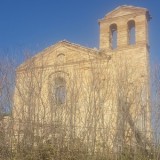 View detail
View detailThere are places full of poetry, where the echo of a story no longer visible can be perceived in the air and makes even a simple blade of grass special.
The artist Giovanni Santi, Raphael's father, attributed to the Muses the ability to make visible the strength of the myth hidden in the elements of the landscape. This is why we have called the Vallefoglia area Parco delle Muse e delle Ninfe.
And there is no more suitable place to reveal the Muses than the territory of Serra di Genga and Coldelce.
There are places that need to be reactivated so that their ancestrality, their ancient strength is not lost in simple abandonment: a more attentive and curious look is needed, greater attention to detail, the will to use memory but also imagination, when remembering means visualizing what has disappeared for centuries.
Serra di Genga and Coldelce deserve this attention and a walkscape, to grasp the transformations of the territory: from an area of churches and castles to an abandoned area, from a place full of history and humanity to an almost unknown territory. The contemporary gaze leads us to find the traces of what binds people today to that ancestral place, going back to distant times.
Promoted by the City of Vallefoglia
Project Antonella Micaletti, Roberto Vecchiarelli
Coordination/Digital: Settimio Perlini
Naturalistic aspects consultancy: Andrea Fazi
Collection of stories edited by Active Longevity Project - Fattoria del Borgo - Montefabbri
Bibliography:
Leonardo Moretti, Castles suspended between dream and memory
Photographs: Photos taken from Moretti's book "Suspended Castles", Marcolini Archive, Settimio Perlini
Texts by Alessandra Mindoli on visitvallefoglia.it
The walkscape is part of the Park of the Muses and Nymphs project
-
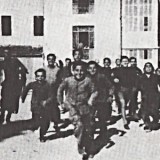
-
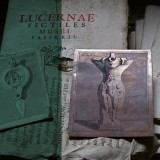
-
 View detail
View detailIn Pontevecchio, a small community in the heart of Vallefoglia, a collector has donated an extraordinary collection of objects that tell of the rural world. The administration placed them in a space of timeless beauty: an ancient mill, then a hydroelectric power station that overlooks the river and a bridge destroyed by the war and which remains so.
From the visit to Museo della mezzadria, a route starts which crosses the brigands' road, the Grossi band, and reaches Cagolino, a small group of houses now almost deserted with a church, public bathrooms and a small wash house.
And finally we arrive at La fattoria del borgo, where two entrepreneurs from rural life today give life to a commercial activity but also to numerous cultural and social projects of great international importance. Young people from all over the world come to the farm, scholars and researchers, but also a group of long-lived people who live in the area and who live experiences of personal growth through meetings, courses and events shared and planned together.
In the shadow of one of the most beautiful villages in Italy, Montefabbri, today memories and projects are activated, wash houses are restored and contemporary sculptures are installed, intellectually curious people pass by to bring and/or take ideas.
All this in a landscape frame that is undergoing great transformation but is still profoundly ancestral, in which the landscape, as Roberto Vecchiarelli says, is a palimpsest: continuously rewritable and always new to tell.
-
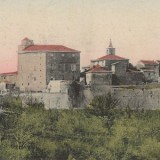
The Rediscovered Stories of Sant'Angelo in Lizzola
View detailIt is not difficult to tell about Sant'Angelo in Lizzola because the town is lively, rich in history, inhabited by welcoming people proud of their roots, full of small and large stories that still echo between old and new streets, where generations meet every day and have places and opportunities for exchange.
It is difficult to do it in such a way as to be able to make it clear how here the big stories intertwine with the small stories, to make the feeling very lively in the country that the historical events and the actions of the great characters are part of everyone's story, reworked and therefore kept in one's memory in an unofficial but rather almost personal way.
There is therefore in Sant'Angelo a collective memory made up of fragments, sometimes translated in an ironic and other nostalgic way, which is still very much alive but could risk being lost. There are several texts - historical, documentary or more popular - but the walkscape intends to mend that fragmented plot and lead the curious to look at the places in the country through the eyes of the protagonists, to underline how the life of the country has always been characterized by men of genius but even by pranksters, scholars and hard workers but also by eccentric characters, by men of power but also by rebels, in the distant past as well as in recent times.
And it was precisely on this line that Don Giovanni Gabucci, Don Gvan, who carried out an enormous archiving work in the parish of the collegiate church of San Michele up until the Second World War, had already created a real itinerary through the town, which described places of historical and artistic interest but also shops and refreshment areas.
The walkscape "The rediscovered stories" has changed the order of the path but wanted to develop its setting, shifting the attention from places to people, from things to protagonists, especially those of the less official story, which since the times of Don Gabucci are increased.
And we maintain another fundamental element of his formulation: just as at each stage Don Gvan cast a glance beyond the walls at the surrounding landscape, so now we underline that it is precisely there that we can read the major transformations and that therefore the landscape can be read as a great portrait of the country.
Today there are no more postcards and no one enjoys portraying places with pencil on paper as Liverani or Costanza Monti did, but the heritage of drawings and photos tells us that Sant'Angelo was and is a castle set in a landscape and that its history is inside and outside the walls up to the contours of the surrounding hills and fields.
-
